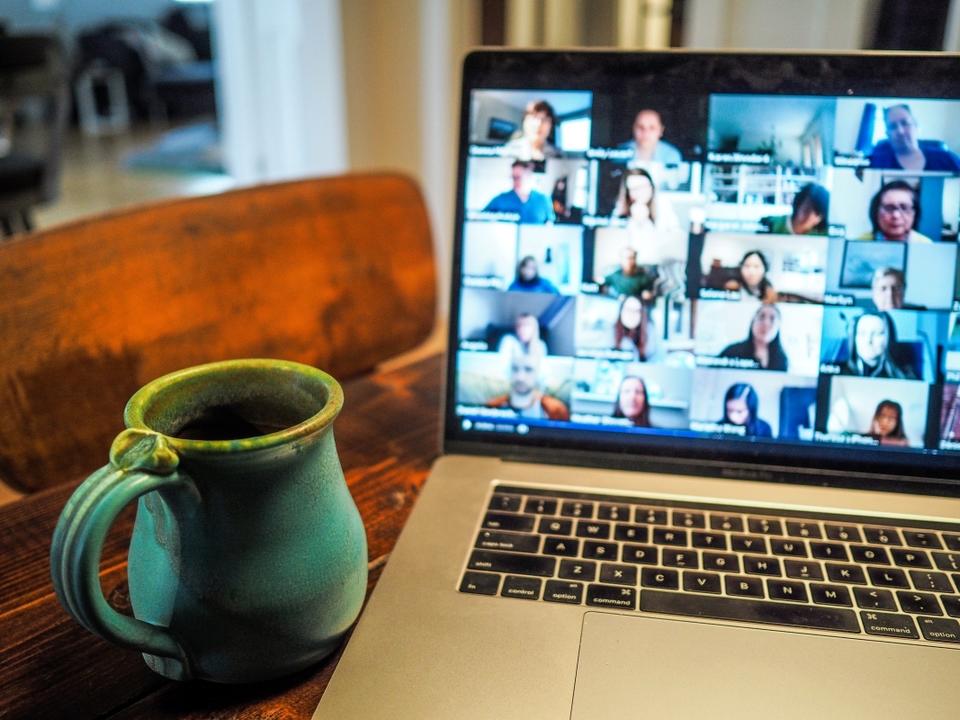
As businesses in the region consider the post-coronavirus landscape, we look at the emerging tech that will facilitate hybrid work models over the long term.
The coronavirus has upended many things this year, one of the biggest being the office. With the pandemic and the UAE’s National Sterilisation Programme, professionals in industries deemed to be non-essential were forced to quickly adapt to a new work from home (WFH) culture.
Morning plan-for-the-day meetings shifted from the boardroom to Zoom while strategy brainstorming sessions migrated to Microsoft Teams as employees swapped the office desk for the dining table.
But when the dust eventually settles on the coronavirus pandemic, what will remain of WFH? Will we go back to the old normal, continue as we are or shift towards something entirely different?
While the upcoming GITEX Technology Week will explore the platforms running the offices of tomorrow – home or otherwise – experts shared some insights for what lies ahead on the post pandemic professional horizon.
When companies began planning and implementing their WFH policies, IT had to bear the brunt of the challenge on a technical front. “The pandemic has accelerated digital transformation and required many organisations to enhance their infrastructure to support a remote workforce in a short span of time,” said Fady Richmany, senior director and general manager – UAE at Dell Technologies. “Having the right infrastructure in place to support and empower remote workers has proven to be business-critical and we’ve seen the need for legacy IT infrastructure to be upgraded to help organisations meet customer and employee needs.”
 Fady Richmany, senior director and general manager – UAE at Dell Technologies
Fady Richmany, senior director and general manager – UAE at Dell TechnologiesWhether through virtual conferencing, virtual desktop infrastructure (VDI) or cloud-based desktop-as-a-service solutions that replicate the office desktop environment, remote employee collaboration was a key element in changing legacy IT systems, Richmany added. “Ensuring access was also essential as many organisations had to implement the use of virtual private networks (VPNs) in order for employees to access office networks, thus also requiring added network bandwidth.”
The results of a survey published by research advisory Gartner in April showed that 41 percent of employees are likely to work remotely at least some of the time after the pandemic is over. For Rami Kichli, vice-president, Software AG, Gulf and Levant, this is a clear indication that remote work is here to stay. He singles out the internet of things (IoT) as a technological tool uniquely placed to power remote work over the long term.
“IoT is a special use case part of the overall digital transformation journey, which has garnered more attention due to the nature of the pandemic, where many organisations started seeking safer working environments and hence looked to deploying IoT solutions – whether WFH or safer work environments as companies started introducing the hybrid work model.
“IoT applications for remote worker monitoring, safe distance monitoring and smart buttons for workers surged during this period.”
 Rami Kichli, Vice-President, Software AG, Gulf and Levant
Rami Kichli, Vice-President, Software AG, Gulf and LevantThe power of IoT also helps remote employees harness the data stored in physical locations of their organisations, adds Kichli. “For example, in the manufacturing sector IoT is enabling teams to conduct their jobs from distributed locations via remote monitoring solutions that include IoT sensors and devices that indicate when a machinery part needs a repair, allowing humans to remotely take action and maintain productivity, all in real time.
In healthcare, IoT-enabled remote patient monitoring is being used to track patent conditions. In the supply chain and logistics sector, companies are leveraging IoT devices to remotely track their assets through the supply chain, reducing the need for human interface and data-recording on the part of employees.”
All of this points towards a future where employees are able to take data-driven decisions in real time, without needing to be present in an office or factory.
Richmany, too, believes that remote working is here to stay regardless of when a coronavirus vaccine is available. “The sudden shift the world experienced has prompted organisations to reimagine new innovative models of working, and to further invest in their technologies and a diverse workforce. We expect to see a hybrid model emerging, with a mix between office and remote work. Employees will demand the flexibility of the remote work environment, while still valuing the unparalleled collaboration that an office environment offers.”
Regionally and globally, one of the big winners in 2020’s remote working boom was Zoom, which saw its Nasdaq share price leap from $67 on January 3 to a high of $568 on October 19. “It’s been an eye-opening few months,” said Sam Tayan, managing director for MENA at Zoom.
In the UAE, he says the platform hit 100,000 free new subscribers within the first week of the country’s Sterilisation Programme coming into force on March 16, going up to a million by mid April. Naturally, he’s happy to point out the benefits often cited by remote workers in surveys, particularly flexible office hours and increased productivity for some.
Kichli says the pandemic has accelerated the shift to flexible working in a way that previously may not have seemed possible. “We expect the future workspace to be a hybrid working model – combining virtual and physical. Physical workspaces today seem to be becoming more a space for convening and group thinking and homes an environment to address individual responsibilities.”
Richmany says the rollout of a vaccine will see organisations prompted to rethink their remote work policies, as well as revisit space planning in the office.
“There will continue to be investments in long-term infrastructure that enables remote work in order to achieve organisational agility.” He cites examples such as applications that allow seamless virtual collaborations to cloud computing for increased data storage.
“As this has become the ‘new normal’, there will also continue to be investments in WFH setups to maximise productivity for employees, from monitors to peripherals.”